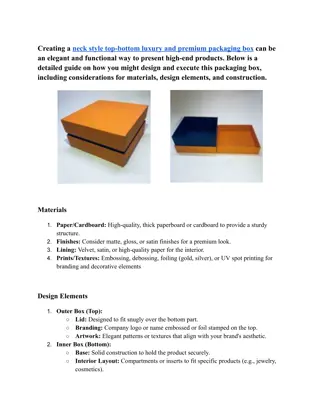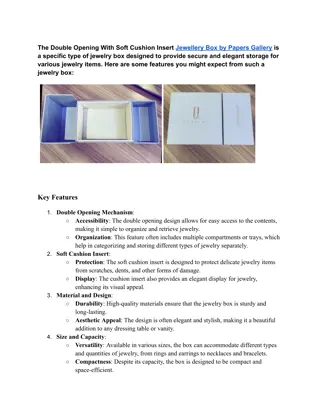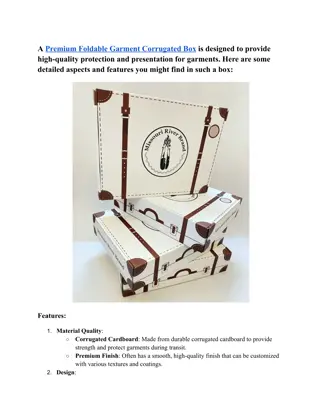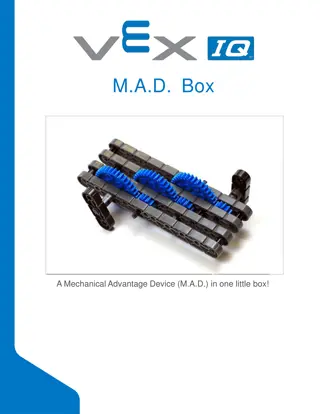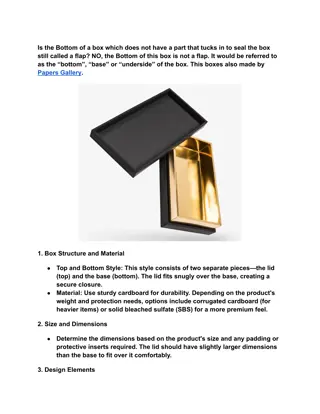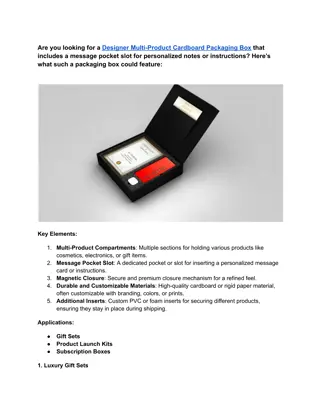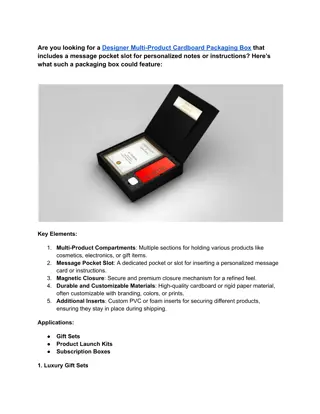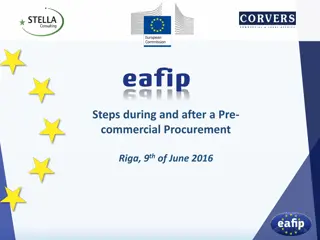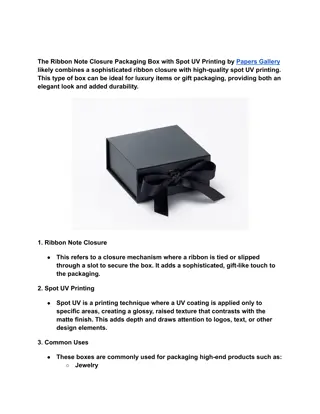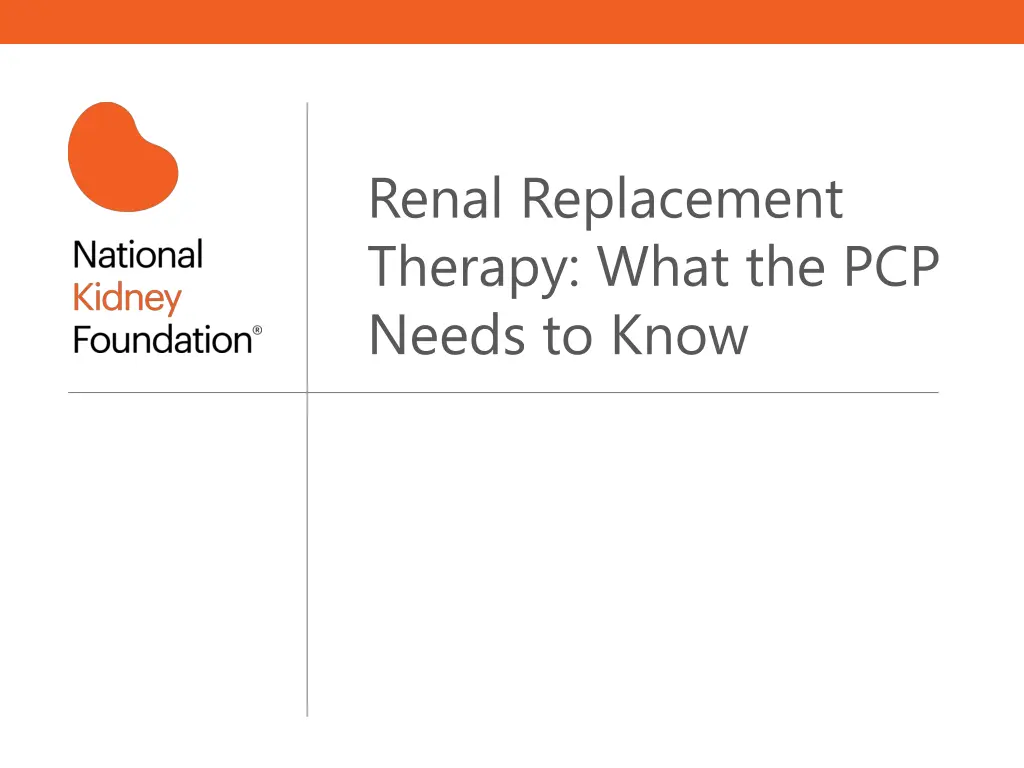
Understanding Renal Replacement Therapy for Better Patient Care
Explore renal replacement therapy options for chronic kidney disease patients, including hemodialysis and kidney transplants. Learn about vascular access, treatment strategies, and patient management from a primary care perspective to improve outcomes and awareness.
Download Presentation

Please find below an Image/Link to download the presentation.
The content on the website is provided AS IS for your information and personal use only. It may not be sold, licensed, or shared on other websites without obtaining consent from the author. If you encounter any issues during the download, it is possible that the publisher has removed the file from their server.
You are allowed to download the files provided on this website for personal or commercial use, subject to the condition that they are used lawfully. All files are the property of their respective owners.
The content on the website is provided AS IS for your information and personal use only. It may not be sold, licensed, or shared on other websites without obtaining consent from the author.
E N D
Presentation Transcript
Renal Replacement Therapy: What the PCP Needs to Know
Learning Objectives Describe treatment options for renal replacement therapy to improve awareness and understanding. Use evidence-based strategies to manage patients with kidney failure in need of renal replacement therapy to improve outcomes. Manage patients receiving dialysis or living with a kidney transplant, from a primary care perspective.
Question 1 A patient with progressive CKD has opted for hemodialysis for renal replacement therapy. Which type of vascular access is associated with better outcomes in hemodialysis patients? A. Central venous cuffed catheter B. Arteriovenous graft C. Arteriovenous fistula D. Temporary central venous catheter
Question 2 Another patient with progressive CKD is considering a kidney transplant. Which one of the following statements is correct? A. CKD patients can be referred to a transplant center when their GFR is < 20 mL/min/1.73m2 B. Pre-emptive and live kidney transplants are associated with better graft survival C. Most common cause of kidney transplant loss is death with a functional transplant D. All of the above
Renal Replacement Therapy Overview and Considerations for the PCP
Indications for Renal Replacement Therapy Hyperkalemia Metabolic acidosis Fluid overload (recurrent CHF admissions) Uremic pericarditis (rub) Other non specific uremic symptoms: anorexia and nausea, impaired nutritional status, increased sleepiness, and decreased energy level, attentiveness, and cognitive tasking,
Treatment Options for Renal Replacement Therapy ESRD Comfort Care Peritoneal Dialysis Hemodialysis Kidney Transplant
Treatment Options for Renal Replacement Therapy ESRD Comfort Care Hemodialysis Peritoneal Dialysis Kidney Transplant
Dialysis Options Dialysis Hemodialysis Peritoneal Dialysis Manual (CAPD) In-Center HD(3 x week) Home HD (short daily, nocturnal) Home Cycler (CCPD)
Incident Patient Counts (USRDS) by 1st Modality USRDS 2013 ADR
Total Medicare ESRD expenditures, by modality Period prevalent ESRD patients. USRDS 2013 ADR
Referral and Education for Patients with Progressive CKD Refer patients early, when eGFR < 30 ml/min/1.73 m2 Education about types of renal replacement therapy: o Hemodialysis (vascular access +++) o Peritoneal Dialysis (QOL advantage +++) o Kidney Transplantation Refer when eGFR < 20 ml/min/1.73 m2 Living kidney transplant (family, friends) Build time on list before dialysis initiation Even transplant before dialysis initiation (pre- emptive) No PICC lines for patients with eGFR < 45 mL/min/1.73m2
Advantages of Timely Referral in Patients with Progressive CKD Improves patient preparation for RRT Greater use of permanent vascular access Avoidance of emergent hemodialysis initiation Greater utilization of transplantation and self-care dialysis (i.e., peritoneal dialysis or home hemodialysis) Management of medications which may help to delay the need for RRT Gives the nephrologist adequate time to counsel patients through this challenging transition in their lives KDIGO Transplant Guidelines
Medical Health and Wellness: Components of Multidisciplinary Care in Progressive CKD Education and counseling about different RRT modalities, transplant options, and vascular access surgery Protocols for laboratory and clinic visits; with attention to CKD and CVD-associated comorbidities (e.g., high blood pressure) Ethical, psychological, and social care (e.g., social bereavement, depression, anxiety) Dietary counseling and education on other lifestyle modifications (e.g., exercise, smoking cessation) Vaccination program KDIGO Transplant Guidelines
Early Vaccination for Hepatitis B: Too Often Forgotten! Patients with ESRD have response to vaccination (Secondary to general suppression of immune system) After Hepatitis B vaccination in ESRD patients: o 50 60 % develop antibodies, compared to > 90% in patients without renal failure o Have Lower titers o Have protective levels for shorter duration Stevens CE et al. NEJM 1984; 311: 496 Buti M et al. Am J Nephrol 1992; 112: 144
Other Considerations for Vaccination in Patients with Progressive CKD Influenza vaccine annually, unless contraindicated. Polyvalent pneumococcal vaccine: o eGFR <30 ml/min/1.73m2 o High risk of pneumococcal infection (e.g., nephrotic syndrome, diabetes, receiving immunosuppression), unless contraindicated. o Offer revaccination within 5 years. KDIGO Transplant Guidelines
High Blood Pressure Common in both dialysis and transplant populations Target blood pressure: o Dialysis: Predialysis: <140/90 mm Hg Postdialysis: <130/80 mm Hg o Transplantation: 130/80 mm Hg Managing high blood pressure in dialysis requires attention to fluid status and antihypertensive medications, while minimizing intradialytic fluid accumulation Can be impacted by certain immunosuppressants in kidney transplantation recipients. Monitor for adverse effects and drug drug interactions KDIGO. Am J Transplant. 2009:9(suppl 3):S1-S155. NKF KDOQI. Am J Kidney Dis. 2000; 35(suppl 2):S1-S3. Alborzi et al. Clin J Am Soc Nepohrol. 2007;2:1228-1234
Principle of Hemodialysis Vein Artery
Urea Mass Transfer During Hemodialysis Solids ICF ECF IV HD Harmon W, Jabs K: Hemodialysis (chap 77) in Pediatric Nephrology, 4th ed Barratt, Avner, Harmon (ed) Lippincott, 1999
Hemodialysis Vascular Access Polytetrafluoroethylene
Which Vascular Access and When Should It Be Placed?
Dialysis Access Provides location for easy access to patient s blood for dialysis Bane of dialysis physician s existence Higher flows and cannulation can lead to stenosis or thrombosis Maintenance of dialysis access patency is critical, at times life-saving o Patency is assessed while patient is on HD by multiple parameters Early detection of stenosis can lead to intervention before thrombosis occurs
Dialysis Access AV Fistula o Vein cross-cut, attached end-to-side to artery o High-pressure flow dilates and thickens vein o Best alternative: Lowest infectious risk Longest lasting with least thromboses o Drawbacks Takes 2-4 months to mature Only about 50% ever mature o Goal for all dialysis patients
Dialysis Access AV Graft o Tube made of biocompatible material (gortex) attached end-to-side to artery and vein o Often required in patients with vascular disease, occluded distal veins o Advantages Ready to use when swelling resolves (~2 weeks) Able to use in most patients o Disadvantages High stenosis/thrombosis rate Moderate infectious risk
Dialysis Access Catheter (IJ most common) o Tunnelled under skin to reduce communication from skin flora with blood o Advantages Ready for use immediately o Disadvantages High infectious risk High thrombosis risk A/W increased mortality Can be a sign of poor pre-dialysis care or extensive vascular disease line
Vascular Access Guidelines Arm veins suitable for placement of vascular access should be preserved, regardless of arm dominance. Arm veins, particularly the cephalic veins of the non-dominant arm should not be used. o Avoid PICC lines Dorsum of the hand could be used for IV. A Medic Alert bracelet should be worn to inform hospital staff to avoid IV cannulation of essential veins. Subclavian vein catheterization should be avoided for temporary access in all patients with CKD ( stenosis preclude use of ipsilateral arm for vascular access)
Patients who started using an AV access by timing of first referral to a nephrologist N=356 hemodialysis patients Astor B. et al. Am J Kidney Dis. 2001; 38:494-501.
SAVE the Non-Dominant ARM for Vascular Access When GFR < 30 mL/min o No BP measurement o No IV o No Blood Draws Place vascular access within a year of hemodialysis anticipation On Non-Dominant Arm
PD Treatment Abdominal cavity is lined by a vascular peritoneal membrane which acts as a semi-permeable membrane Diffusion of solutes (urea, creatinine, ) from blood into the dialysate contained in the abdominal cavity Removal of excess water (ultrafiltration) due to osmotic gradient generated by glucose in dialysate
Peritoneal Dialysis (PD) PD Continuous Intermittent
Continuous PD Regimens Multiple sequential exchanges are performed during the day and night so that dialysis occurs 24 hours a day, 7 days a week CAPD: Continuous Ambulatory PD CCPD: Continuous Cyclic PD
Intermittent PD Regimens PD is performed every day but only during certain hours DAPD: Daytime Ambulatory PD. Multiple manual exchanges during waking hours NPD: Nightly PD. Performed while patient asleep using an automated cycler machine. Sometimes, 1 or 2 day-time manual exchanges are added to enhance solute clearances `
Is Timing of Dialysis Initiation Important in ESRD Patients? (Controversial)
IDEAL Study: KM Curves for Time to the Initiation of Dialysis & for Time to Death Between July 2000 & November 2008 Australia / New Zealand 828 adults Early start: eGFR 10-14 cc/min Late start: eGFR 5-7 cc/min Mean age 60.4 years 542 men & 286 women 355 with diabetes Median follow-up 3.6 years Cooper BA et al. N Engl J Med 2010;363:609-619
Implications Total of 75.9% of the patients in the late-start group started dialysis when eGFR was > 7.0 mL/min/1.73m2, owing to the development of symptoms! In this study, planned early initiation of dialysis in patients with stage V CKD was not associated with an improvement in survival or clinical outcomes (QOL) OK to delay initiation of dialysis (eGFR < 7-10 mL/min/1.73m2) Dialysis initiation should be based upon clinical factors (symptoms) rather than eGFR alone Cooper BA et al. N Engl J Med. 2010;363:609-619.
Why is Residual Renal Function Important in Dialysis Patients?
Why is baseline residual renal function important? Remaining GFR at start of dialysis make a significant contribution to the removal of potential uremic toxins Also facilitates regulation of fluid, electrolytes, and may enhance nutritional status and QOL Offers survival advantage in both HD and PD Suda T et al. Nephrol Dial Transplant. 2000; 15:396. Shemin D et al. Am J Kidney Dis.2001; 38: 85. Szeto C et al. Nephrol Dial Transplant 2003;18.7
Cumulative Incidence of All-Cause Mortality in 579 HD Patients by Urine Status at 1 Year (CHOICE) Adjusted Hazard Ratio: 0.70 (0.52-0.93) p = 0.02 Shafi T., Jaar B., et al. Am J Kidney Dis. 2010;56:348-58
Implications Try to preserve residual renal function in dialysis patients! Less dietary restriction Better quality of life Better survival Try to avoid nephrotoxins if your dialysis patient still makes urine!
Principle of Kidney Transplantation Iliac Fossa
Eligibility Able to be evaluated once GFR <20 mL/min Need just one listing less than 20 mL/min to remain active With GFR 15-19 mL/min- can be transplanted if live donor or if six antigen match If GFR <15 mL/min- open to all offers Why starting early- if certain blood types with long wait time, no potential live donors
Absolute contraindications Liver cirrhosis/primary oxalosis- unless combined liver/kidney Poorly controlled psychiatric illness Minimal rehabilitative potential Morbid obesity BMI>40 Active malignancy Advanced lung disease o Chronic O2 needs o FEV 1<1 Ongoing infections Life expectancy less than 2 years Active substance abuse Ischemic Cardiac disease o Not amenable to revascularization Severe peripheral vascular disease

